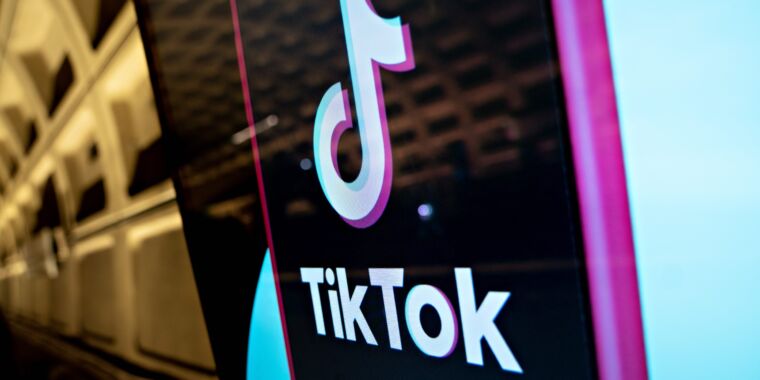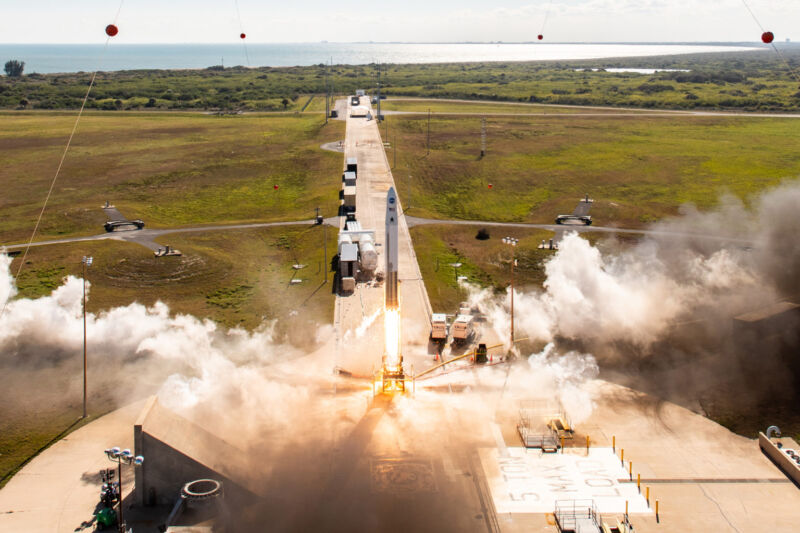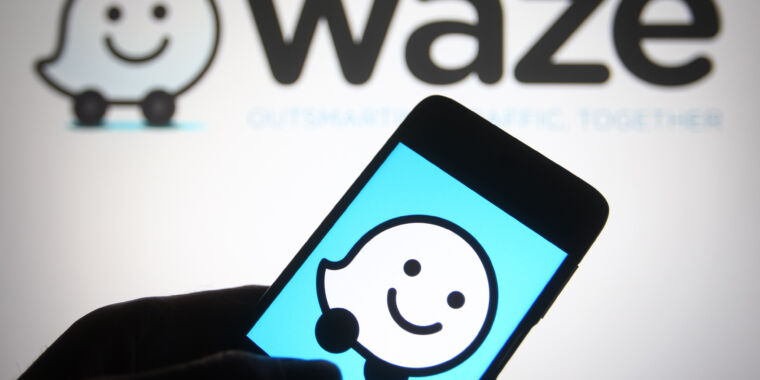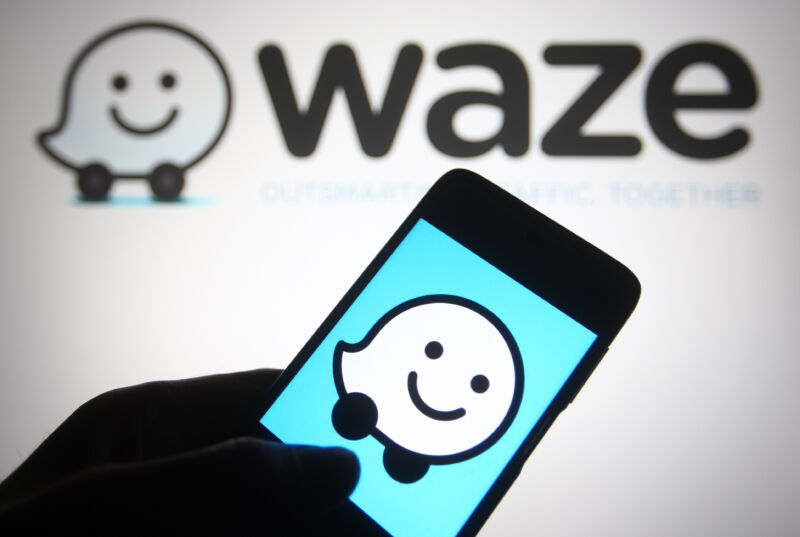Ghouls, gulpers, and general mayhem abound in Fallout official trailer
A story of haves and have-nots —
“Everyone wants to save the world. They just disagree on how.”
A Vault Dweller navigates a post-apocalyptic wasteland in Fallout, based on the bestselling gaming franchise.
Amazon Prime Video has dropped the full official trailer for Fallout, the streaming platform’s forthcoming post-apocalyptic sci-fi series. It’s based on the bestselling role-playing gaming franchise set in a satirical, 1950s-style future post-nuclear apocalypse. There’s plenty for gaming fans to be pleased about, judging by the trailer, but casting national treasure Walton Goggins (Justified) as a gunslinging Ghoul was quite simply a stroke of genius.
The first Fallout RPG was released in 1997, followed by several sequels and spinoffs. According to the game’s lore, modern civilization is destroyed in 2077 by a global nuclear war between the US and China. Survivors live in various underground vaults (fallout shelters). Each iteration of the game takes place somewhere across a post-apocalyptic US metro area and features a Vault Dweller—someone born and raised underground—as the protagonist. The first game takes place in 2161 and features a Vault Dweller from Vault 13, deep in the mountains of Southern California. The Vault Dweller must complete various missions to save the residents of Vault 13, which takes said protagonist to in-world places like Junktown; a merchant city called the Hub; and Necropolis, filled with Ghouls, i.e., humans badly mutated by exposure to nuclear radiation.
The series was announced in July 2020, with Westworld writers Jonathan Nolan and Lisa Joy serving as executive producers. In January 2022, it was revealed that Nolan would direct the first three episodes but that two other writers—Geneva Robertson-Dworet and Graham Wagner—would be the showrunners. Todd Howard, who directed several games in the franchise, is also an executive producer and has said the series is not an adaptation of any particular game, but it is set within the same continuity. Per the official premise:
Based on one of the greatest video game series of all time, Fallout is the story of haves and have-nots in a world in which there’s almost nothing left to have. Two hundred years after the apocalypse, the gentle denizens of luxury fallout shelters are forced to return to the irradiated hellscape their ancestors left behind—and are shocked to discover an incredibly complex, gleefully weird and highly violent universe waiting for them.
In addition to Goggins, Ella Purnell stars as a young Vault Dweller named Lucy, who must venture out into the wasteland on a mission to save her community in Vault 33. Aaron Moten plays a squire of the Brotherhood of Steel named Maximus; Kyle MacLachlan plays Lucy’s father, Hank, who is a Vault Overseer; Mike Doyle plays Mr. Spencer; Moises Arias plays Lucy’s brother, Norm; Michael Emerson plays an enigmatic wanderer named Wilzig; Johnny Pemberton plays Thaddeus; Cherien Dabis plays Birdie; Dale Dickey plays Ma June; Matty Cardarople plays Huey; Dave Register plays Chet; Rodrigo Luzzi plays Reg; and Annabel O’Hagan plays Steph. Sarita Choudhury and Leslie Uggams also appear in the series.
-
Nuclear weapons have devastated Los Angeles.
YouTube/Prime Video
-
Ella Purnell stars as a young Vault Dweller named Lucy.
YouTube/Prime Video
-
The Ghoul (Walton Goggins) is a mutated gunslinger and bounty hunter.
YouTube/Prime Video
-
Aaron Moten plays Maximus, a squire with the Brotherhood of Steel.
YouTube/Prime Video
-
Hey, it’s Michael Emerson of Lost fame, playing an enigmatic wanderer named Wilzig.
YouTube/Prime Video
-
Kyle MacLachlan plays Lucy’s father, Hank, a Vault Overseer.
YouTube/Prime Video
-
Sarita Choudhury looking fierce!
YouTube/Prime Video
-
A glimpse of the Ghoul when he was still Cooper Howard, trying to save his daughter from a nuclear blast.
YouTube/Prime Video
-
“I’m simply going to harvest your organs.”
YouTube/Prime Video
-
Look out for Gulpers!
YouTube/Prime Video
-
“There you are, you little killer.”
YouTube/Prime Video
A teaser dropped in January, chock-full of details instantly recognizable to longtime fans of the games. The new trailer opens with a pre-apocalypse Goggins in a snazzy suit, pitching “a veritable Camelot of the nuclear age”: underground vaults housing residential communities, “because if the worst should happen tomorrow, the world is gonna need you to build a better day after.” The worst does happen, of course, and we catch glimpses of a devastated Los Angeles in the wake of a nuclear war, including a ruined Santa Monica Pier and Griffith Observatory. Then we see Lucy preparing to leave her Vault, despite warnings that “it isn’t like the Vault out there; it’s big.”
Lucy first encounters a hardened Ma June, who laughs derisively when Lucy naively asks what’s happened in the last 200 years. (Frankly, she thought all the Vault Dwellers were dead.) Lucy also has several run-ins with the Ghoul formerly known as Cooper Howard. Pretty much everyone she meets seems to want her dead, although the robot Mr. Handy helpfully informs her it just wants to harvest her organs. Maximus gets his share of screen time, both in and out of full Brotherhood of Steel armor, and we get a glimpse of the Brotherhood’s airships, as well as a mutant monster called a Gulper. It’s a violent, chaotic wasteland, but apparently, “there’s always somebody behind the wheel.”
All episodes of Fallout will premiere on Prime Video on April 11, 2024.
Listing image by YouTube/Prime Video
Ghouls, gulpers, and general mayhem abound in Fallout official trailer Read More »






















